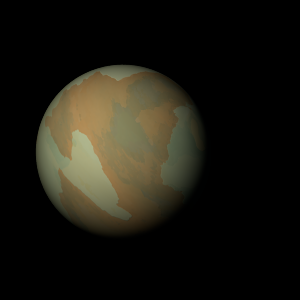|
|
Space Astro
|
Info for exoplanet "Moso Hyuga"
| Scientific (actual) data |
|---|
| Name | Kepler-993 b |
| Planet status | Confirmed |
| Radius | 0.265 |
| Orbital period | 22.0856 |
| Discovered | 2016 |
| Updated | 2021-02-05 |
| Tconj | 2454970 |
| Publication | Announced on a website |
| Detection type | Primary Transit |
| Alternate names | 2MASS J19302738+4423407 b, K01879.01, KIC 8367644 b, KOI-1879 b, KOI-1879.01, WISE J193027.38+442340.7 b |
| Star name | Kepler-993 |
| Right ascension | 292.61° |
| Declination | 44.39° |
| Mag j | 13.587 |
| Mag h | 12.893 |
| Mag k | 12.729 |
| Star distance | 298 |
| Star metallicity | 0.03 |
| Star mass | 0.57 |
| Star radius | 0.54 |
| Star age | 3.89 |
| Star temperature | 3843 |
| Star alternate names | 2MASS J19302738+4423407, KIC 8367644, KOI-1879, WISE J193027.38+442340.7 |
| Wikipedia article | Kepler-993 b |
Back
| |
| Fictional info (?) |
|---|
| Suggested name | Moso Hyuga |
| Planet type | Cold planet |
| Because of its fast rotation, the planet's shape is that of an oblate spheroid (it has a slight but noticeable bulge around the equator). |
| Atmosphere | Xenon | 55% |
| Sulfur dioxide | 41% |
| Hydrogen chloride | 2.3% |
| Krypton | 1.1% |
| Ethane | 0% |
| Atmospheric pressure | 0.5 bar |
 |
| No known satellites |
| Google search for Moso hyuga |
|
Website by Joachim Michaelis
|
|
|
|